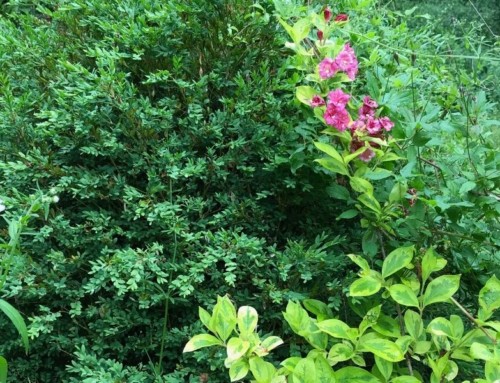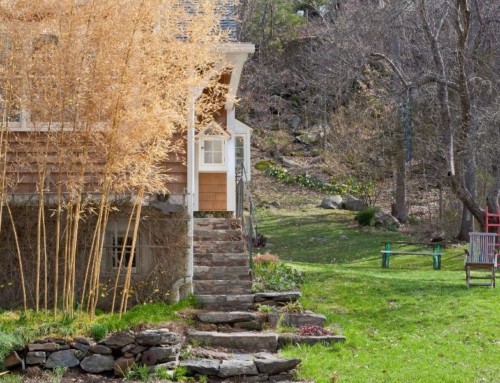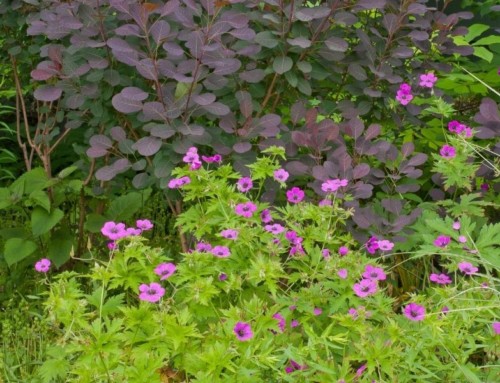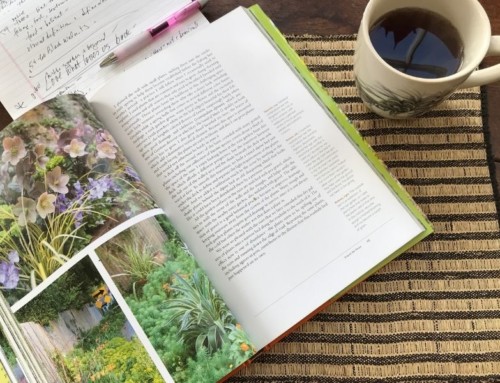In plants, hues of red or blue are due to phytochemical pigments – anthocyanins – in their tissues. Anthocyanins make blueberries appear blue, grapes and cabbage purple, black plums black, oranges orange, raspberries (and leaves) red.
These anthocyanin-pigmented fruits and vegetables contain health-boosting antioxidants, which are water-soluble.
That’s why the pretty purple stringbeans my son and I once grew turned green when we dropped them into boiling water.
Anthocyanins have several protective functions. One is to discourage herbivory, i.e. being eaten by insect or animal herbivores (carnivores could care less).
Good for the plant, not so good for caterpillars and other beneficial leaf-eating insects that either can’t or won’t eat leaves containing these chemicals.
In weighing visual appeal against wildlife value, it’s good to know what’s what and where value lies.
Sometimes pizzaz has a price. But you don’t have to throw design considerations out the window just because you want to support wildlife.
Balancing Visual and Wildlife Appeal
Wild geraniums, for example, are valuable larval food plants. What if you’re smitten with its dark purple-leafed cultivar (Geranium maculatum ‘Espresso’)? It’s your garden too.
Maybe think of ‘Espresso’ as an accent rather than a main player.
Plant more of the green-leafed straight species with a few of the dark-leafed form and you’ll feed caterpillars (so they will become butterflies (or bird food), satisfy plant lust and jazz up the visuals.
Combining “alike but different” plants gives you both cohesiveness and contrast. The similarities between the two forms make visual harmony, their differences add “pop.”
More Anthocyanin Protective Qualities
Anthocyanin compounds also protect plants from UV light, cold temperatures and drought. This is why so many plants that retain a presence in winter appear purple or red even if they’re green in summer.
Green chlorophyll masks the rainbow of pigments inside leaves. It’s all falling apart now, as winter approaches. Leaves still hanging on are every permutation of red, thanks to those anthocyanins.
And there’s more: red berries of native plants pack just the nutrients birds need to sustain themselves through migration or cold weather. Birds see red too, and flock to partake.
Long-lasting Autumn Reds I’m Loving Now
* = plants native to Eastern North America
- A few lingering leathery leaves of highbush blueberries *(Vaccinium corymbosum)
- Eye-popping winterberry holly *(Ilex verticillata) berries in wetlands (robins ate all mine already)
- My golden smokebush turned green in summer, then deep dusky purple, now cheery cherry red with yellow undertones.
- Oak-leaf hydrangea *(Hydrangea quercifolia), bold deeply cut leathery leaves of deep maroon
- Shade tolerant viburnum (Viburnum setigerum) with orangey-red foliage and pendulous clear red berry clusters
- Intensely pure red Japanese maples – in other people’s yards
- Virginia sweetspire *(Itea virginica ‘Henry’s Garnet’), the hue of very expensive red wine
- *Oaks – scarlet, orange, maroon, rust – every shade of red. I love them more every year
- And ever the star – red chokeberry *(Aronia arbutifolia ‘Brilliantissima’), with complex fruity red leaves and abundant clusters of shiny red berries that birds won’t eat until March (photo in header)

Aronia arbutifolia ‘Brilliantissima’





